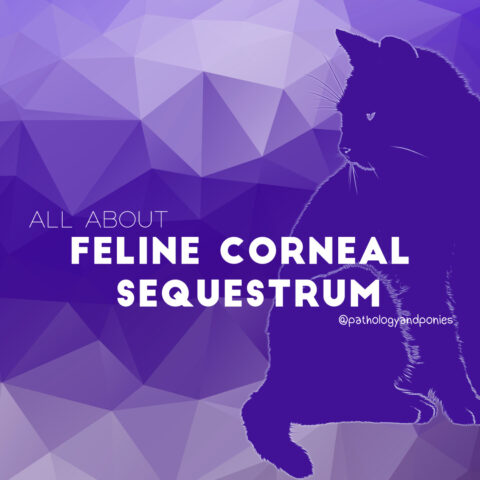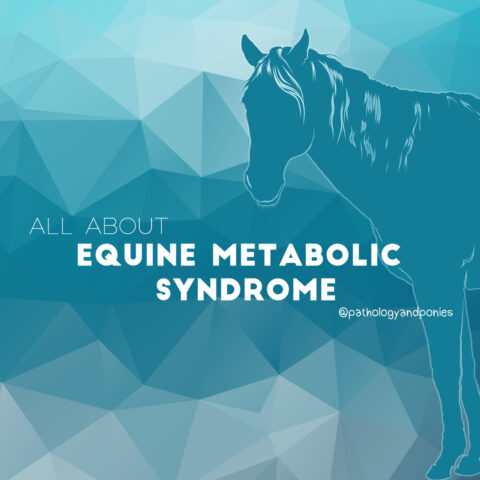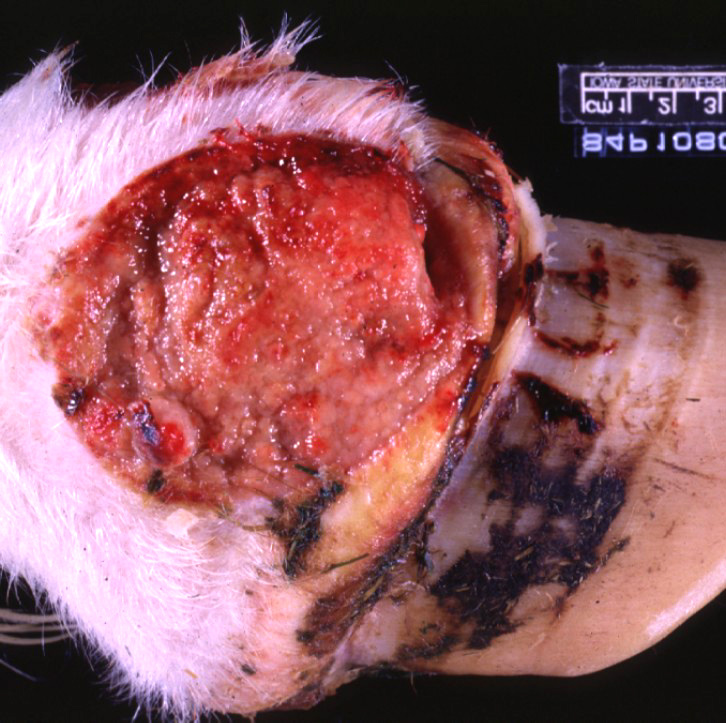
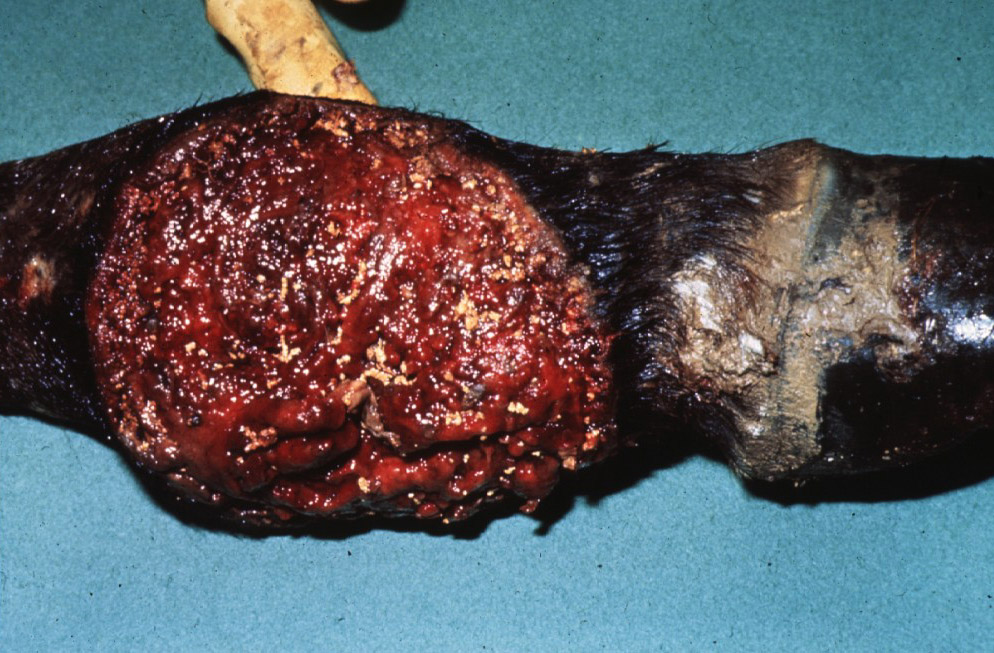
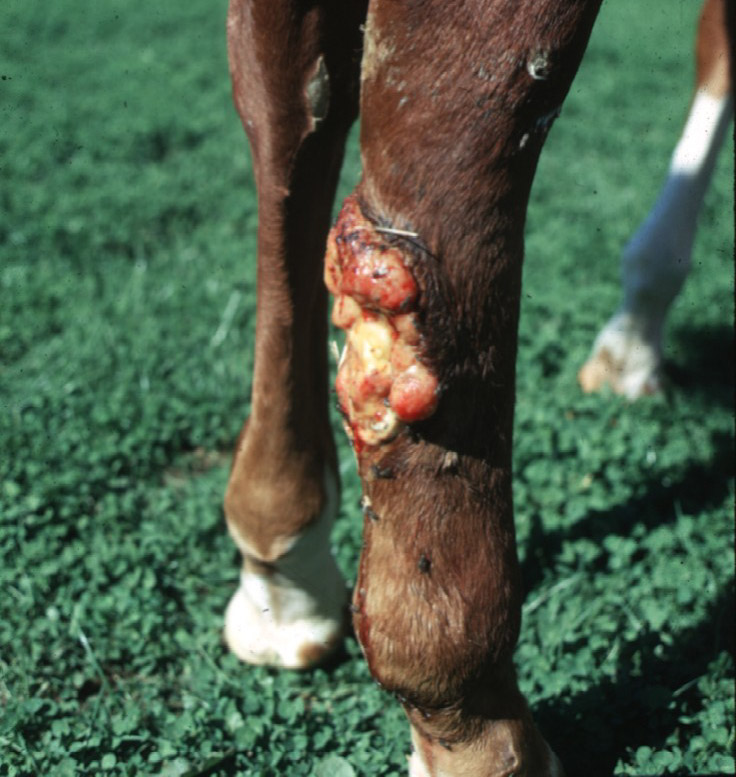
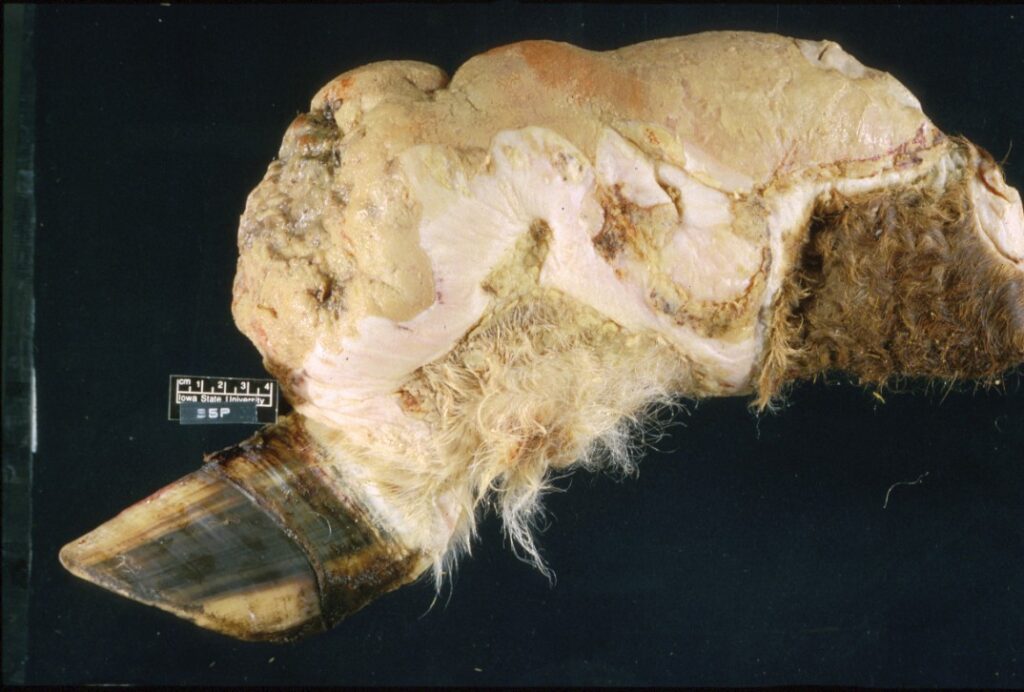
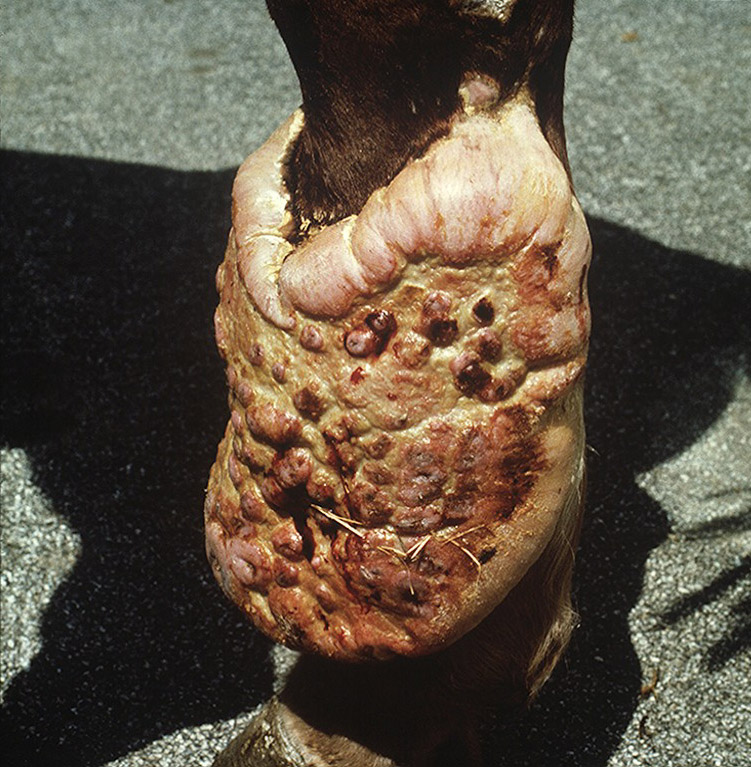
Today’s path rounds are on 𝐩𝐫𝐨𝐮𝐝 𝐟𝐥𝐞𝐬𝐡!
𝐖𝐡𝐚𝐭 𝐢𝐬 𝐢𝐭?
𝐏𝐫𝐨𝐮𝐝 𝐟𝐥𝐞𝐬𝐡 is a form of 𝐠𝐫𝐚𝐧𝐮𝐥𝐚𝐭𝐢𝐨𝐧 𝐭𝐢𝐬𝐬𝐮𝐞, which is the initial tissue that fills in a wound during healing. With proud flesh, the granulation tissue is considered 𝐞𝐱𝐮𝐛𝐞𝐫𝐚𝐧𝐭, with too much tissue being formed.
𝐖𝐡𝐨 𝐠𝐞𝐭𝐬 𝐢𝐭?
We most commonly see this in horses!
𝐖𝐡𝐚𝐭 𝐜𝐚𝐮𝐬𝐞𝐬 𝐢𝐭?
Proud flesh is most commonly seen on the limbs of horses. The exact reason for this is unknown, however it is likely related to the poor blood flow to these areas, combined with being constantly in motion and having minimal “soft tissue” like skin, muscle and fat. These combined factors lead to increased production of granulation tissue, to the point where there is far more tissue than actually needed to fill in the wound.
𝐖𝐡𝐲 𝐢𝐬 𝐭𝐡𝐢𝐬 𝐚 𝐩𝐫𝐨𝐛𝐥𝐞𝐦?
The main problem with proud flesh is that it prevents proper healing of the skin. When there is a wound, two free edges of skin are formed. As the skin heals, one skin edge wants to try and grow towards the other edge, in order to close off the defect. With proud flesh, there is a big mass of tissue that prevents the skin edges from ever meeting! Thus, the wound can never truly heal.
𝐇𝐨𝐰 𝐢𝐬 𝐢𝐭 𝐝𝐢𝐚𝐠𝐧𝐨𝐬𝐞𝐝?
Proud flesh is so common in horses that usually veterinarians are able to diagnose it just based on the appearance. However, there are some other conditions that can look similar to proud flesh. In cases where typical proud flesh treatment is unsuccessful, submitting a biopsy to a pathologist is helpful to rule out any other diagnoses, like tumours.
𝐇𝐨𝐰 𝐢𝐬 𝐢𝐭 𝐭𝐫𝐞𝐚𝐭𝐞𝐝?
The main goal of proud flesh treatment is to allow the skin edges to come together. This typically involves 𝐝𝐞𝐛𝐫𝐢𝐝𝐞𝐦𝐞𝐧𝐭 of the proud flesh, or cutting off the excess tissue. Thankfully, this relatively immature tissue doesn’t have any nerve endings yet, so this process is not painful for the horse! However, this tissue does have a 𝐥𝐨𝐭 of blood vessels, so they can bleed excessively during this process. In general, this is more disturbing to the owners than it is to the horse!
𝐏𝐡𝐨𝐭𝐨𝐬
1-5) Examples of proud flesh on the limbs of horses!
𝐒𝐨𝐮𝐫𝐜𝐞𝐬
Maxie, G. Jubb, Kennedy and Palmer’s Pathology of Domestic Animals, Volume 1. Sixth Edition.
Photos 1-5 © Noah’s Arkive contributors Niyo, Harrington, Wallace, Dodd, Howard licensed under CC BY-SA 4.0.



